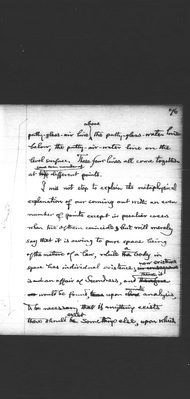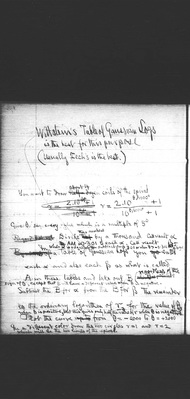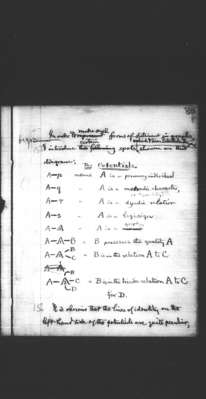Pages
76
76
putty-glass-air line above the putty-glass-water line below, the putty-air-water line on the level surface. These four lines all come together at some even number of different points.
I will not stop to explain the metaphysical explanation of our coming out with an even number of points except in peculiar cases when two of them coincide, but will merely say that it is owing to pure space being of the nature of a law, while a body in space has individual existence; now existence is an affair of Secondness, and therefore thence it would be found, upon close minute analysis, to be necessary that if anything exists there should exist something else, upon which
78
78
it may react; and in order that the law of space should not unite the two things a twofold condition has to be satisfied from which it results, I will not stop to explain how, that the points reached should be two.
Here is a logical proportion
| A particle moves | A pear is ripe |
|---|---|
| A particle passes over a path | A pear possesses ripeness |
| A filament moves from its place | Ripeness is more or less |
|---|---|
| A filament passes over a surface | Ripeness possesses degree |
80
82
since the characters they denote are not, properly speaking, individuals. For that reason and others, to the left of the potentials I use selectives not ligatures.
As an example of the use of the potentials, we may take this graph, which expresses a theorem of great importance: The proposition is that for every quality, Q, whatsoever,
[diagram]
there is a dyadic relation, R, such that, taking any two different individuals both possessing this quality, Q, either the first stands in the relation R to some thing to which the second




